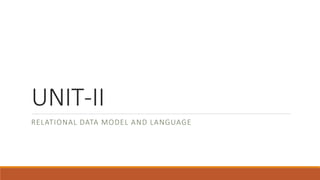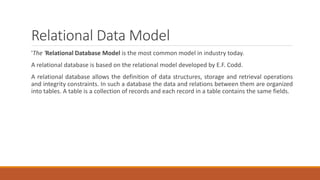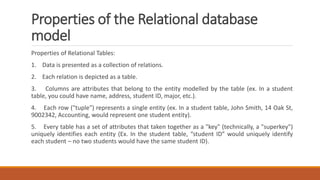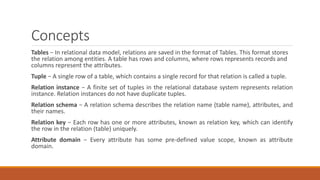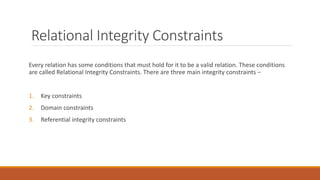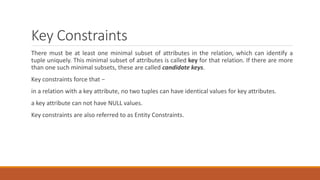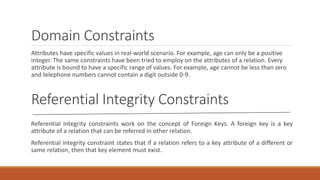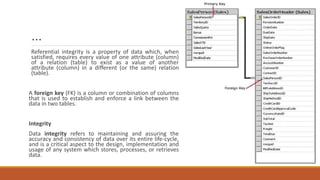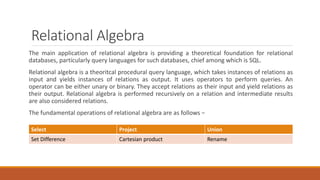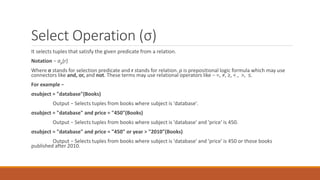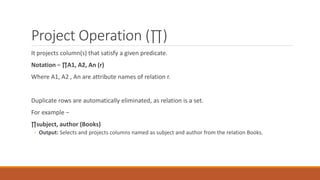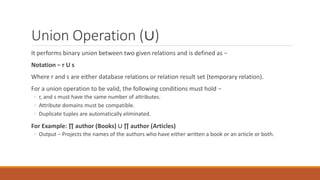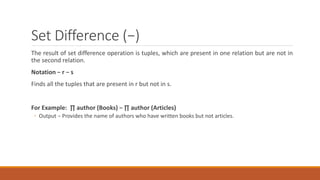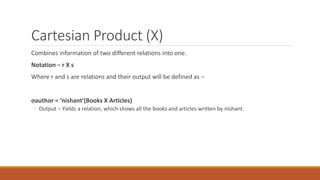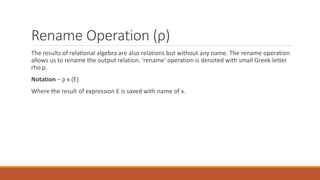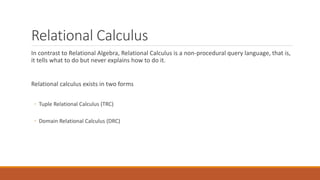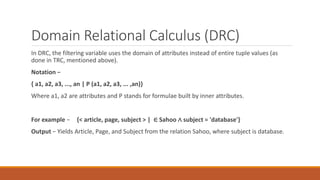The document discusses the relational data model and query languages. It provides the following key points:
1. The relational data model organizes data into tables with rows and columns, where rows represent records and columns represent attributes. Relations between data are represented through tables.
2. Relational integrity constraints include key constraints, domain constraints, and referential integrity constraints to ensure valid data.
3. Relational algebra and calculus provide theoretical foundations for query languages like SQL. Relational algebra uses operators like select, project, join on relations, while relational calculus specifies queries using logic.
